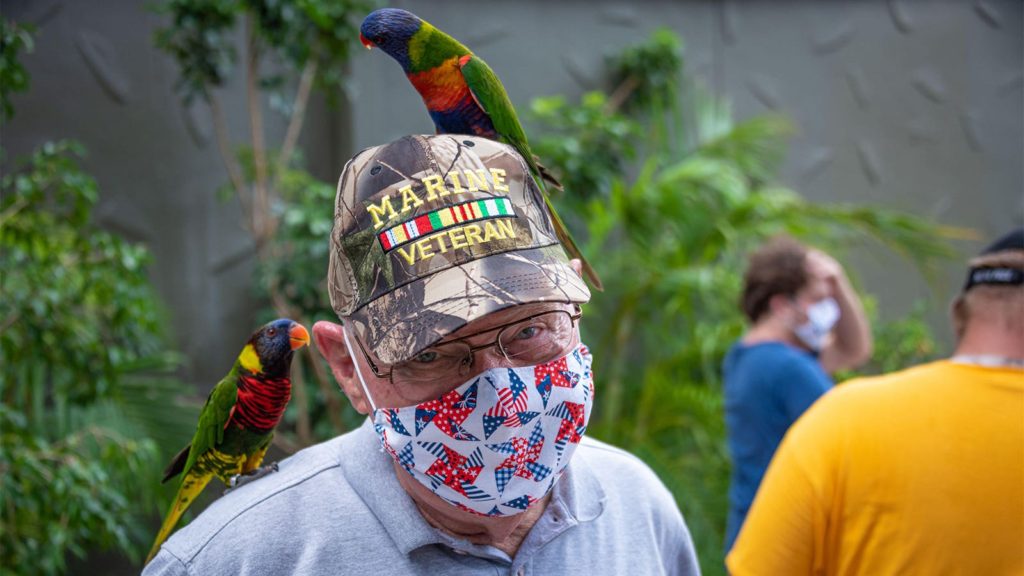While the 2-year mortality risk after a COVID-19 infection was higher overall among U.S. veterans, there was no excess mortality after the first 6 months post infection compared with uninfected individuals, according to a large retrospective cohort study.
Veterans who had been infected with COVID from March 2020 to April 2021 had an unadjusted mortality rate of 8.7% during the 2-year period after their infection compared with a rate of 4.1% for matched uninfected veterans (P<0.001), with an adjusted hazard ratio (aHR) of 2.01 (95% CI 1.98-2.04) with censoring if the comparator later developed COVID, reported Theodore J. Iwashyna, MD, PhD, of Johns Hopkins University in Baltimore, and colleagues.
The risk of excess death went down over time, with the highest risk on days 0 to 90 after infection (aHR 6.36, 95% CI 6.20-6.51), and risk still elevated during days 91 to 180 (aHR 1.18, 95% CI 1.12-1.23), they noted in JAMA Internal Medicine.
However, those who survived COVID had decreased mortality at days 181 through 365 (aHR 0.92, 95% CI 0.89-0.95), which further decreased on days 366 through 730 (aHR 0.89, 95% CI 0.85-0.92).
This return to the same mortality risk more than 6 months after COVID-19 was not expected, Iwashyna told MedPage Today.
“There was no clinically significant ongoing increased risk of death from 6 months to 24 months out,” he noted. “We’ll have to wait and see if that remains true for longer periods of time.”
He pointed out that patients who were hospitalized at the time of their initial COVID infection did have an ongoing higher risk of death throughout the 2 years.
The purpose of the study was to determine if survivors of acute COVID continued to have a higher mortality risk, and if so, for how long. “People who survive a hospitalization for sepsis are more likely to die for years afterwards, and we feared this might be true for all COVID patients, too — especially with all the data showing that COVID survivors get diagnosed with lots of other potentially harmful diagnoses in the months after COVID,” Iwashyna said.
“We really need to improve our follow-up care for patients hospitalized with COVID and other kinds of pneumonia,” he added. “Hospital discharge is not the end of their risk, and we need to better support them for years afterwards.”
The short time period in which excess mortality occurs after COVID is well known, Aaron E. Glatt, MD, of the Icahn School of Medicine at Mount Sinai in New York City, told MedPage Today, noting that sicker patients may have been culled out early by a COVID infection, which may be why mortality risk returns to normal after only 6 months.
It is also possible that the cohorts were not large enough to tease out a small impact on changes in mortality rates, he said.
This finding that mortality rates return to normal could be useful in reassuring patients who contract COVID that their health will get back on track, he added.
For this study, Iwashyna and team used prospectively collected health record data from Veterans Affairs hospitals across the U.S. on those who had COVID from March 2020 to April 2021.
They included 208,061 veterans with first-documented COVID infection (mean age 60.5, 88.1% men, 67.1% white, and 22.9% Black) and matched them with 1,037,423 uninfected comparators (up to five each) with similar characteristics.
The authors noted that follow-up only went to 24 months for individuals infected in 2020 and early 2021. Therefore, their results should not be generalized to later variants or the period of time in which home testing and vaccination became more widespread.
Furthermore, “the potential cumulative effects of COVID-19 will not be fully seen for years or decades to come — these data suggest ongoing differences for which follow-up is needed,” they wrote.
Disclosures
This study was supported by the Veterans Affairs (VA) Health Services Research and Development Service through service awards for the COVID Observational Research Collaborative; and for use of the VA-linked Medicare data. Two co-authors were supported in part by a VA Research Career Scientist Award.
Iwashyna reported grants from the U.S. Department of Veterans Affairs Health Services Research and Development and the NIH.
Co-authors reported relationships with government and foundation sources.
Primary Source
JAMA Internal Medicine
Source Reference: Iwashyna TJ, et al “Late mortality after COVID-19 infection among US veterans vs risk-matched comparators: a 2-year cohort analysis” JAMA Intern Med 2023; DOI: 10.1001/jamainternmed.2023.3587.
Please enable JavaScript to view the

